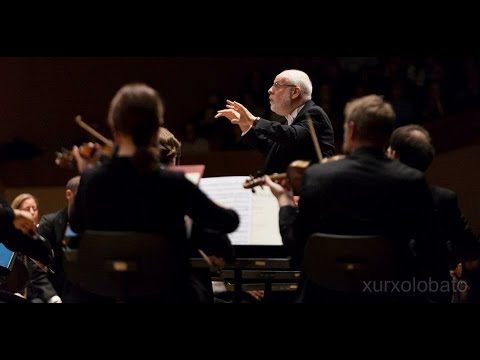2.5: Measures and Time Signatures
- Page ID
- 72357
Measure
Measure is a segment of time within a piece of music defined by a given number of beats. Each measure is separated by a bar. Within each measure, beats are represented by a particular note value and the boundaries of the bar are indicated by vertical bar lines. Dividing music into bars provides regular reference points to pinpoint locations within a piece of music. It also makes written music easier to follow, since each bar of staff symbols can be read and played as a batch.
On the staff, bar lines provide boundaries and structure and can also give a musician directions. A double bar line (or double bar) can consist of two single bar lines drawn close together, separating two sections within a piece, or a bar line followed by a thicker bar line, indicating the end of a piece or movement.
A repeat sign looks like the music end, but it has two dots, one above the other, indicating that the section of music that is before is to be repeated. The beginning of the repeated passage can be marked by a begin-repeat sign; if this is absent the repeat is understood to be from the beginning of the piece or movement. This begin-repeat sign, if appearing at the beginning of a staff, does not act as a bar line because no bar is before it; its only function is to indicate the beginning of the passage to be repeated.
Types of Bar Lines

Time Signatures
In written music, time signatures are also called meter signatures. They help us identify which kind of note is used to count beats in a measure and how many beats will be in each measure.
In a musical score, the time signature appears at the beginning of the piece, as a time symbol or stacked numerals. Below are some common time signatures and how they are placed on the staff.
Common Time Signatures

The first example is 4/4 time. In this time signature there are 4 beats possible in each measure, and the quarter note represents one beat. The top number of the time signature tells how many beats are in each measure, and the bottom number tells which note will represent one beat. Sometimes 4/4 time is represented by a large C, because it is also know as common time.
The time signature 2/2 means that in each measure, the half note represents one beat (indicated by the lower number) and there are two beats in each measure (indicated by the top number)
The time signature 3/4 tells a musician that a quarter note represents one beat in a measure (the lower number) and that there will be three beats in each measure (the top number).
- What does the time signature 6/8 mean?
- What do you think the C with a line down the center means?
Classification of Meters
Simple Meters
In a simple meter, each beat in a measure can be broken into two equal parts. For example in 3/4 time the quarter note is used to count the three beats in each measure. The quarter note can be halved into eighth notes, therefore 3/4 is a simple meter.
Listen to the first movement of Haydn’s “Farewell” Symphony. The beat can easily be divided into two eighth notes.
Compound Meters
In a compound meter, each beat can be divided into thirds. For example in 6/8 time, the eighth note represents one beat and there are six beats in each measure.
Please listen to the first movement of Corelli’s “Christmas Concerto,” tapping to its slow, steady beat.
Contributors and Attributions
- Joseph Haydn / Symphony No. 45 in F-sharp minor: Farewell (Mackerras). Authored by: scrymgeour34. Located at: http://www.youtube.com/watch?v=KXctarOxRz8. License: All Rights Reserved. License Terms: Standard YouTube License
- Arcangelo Corelli - Concerto grosso, No. 8, Op. 6 'Christmas Concerto' - Pastorale. Authored by: Anna and Quido Holbling, violins. Ludowit Kanta, cello. Located at: http://www.youtube.com/watch?v=-Zs6_vsU9cg. License: All Rights Reserved. License Terms: Standard YouTube License


